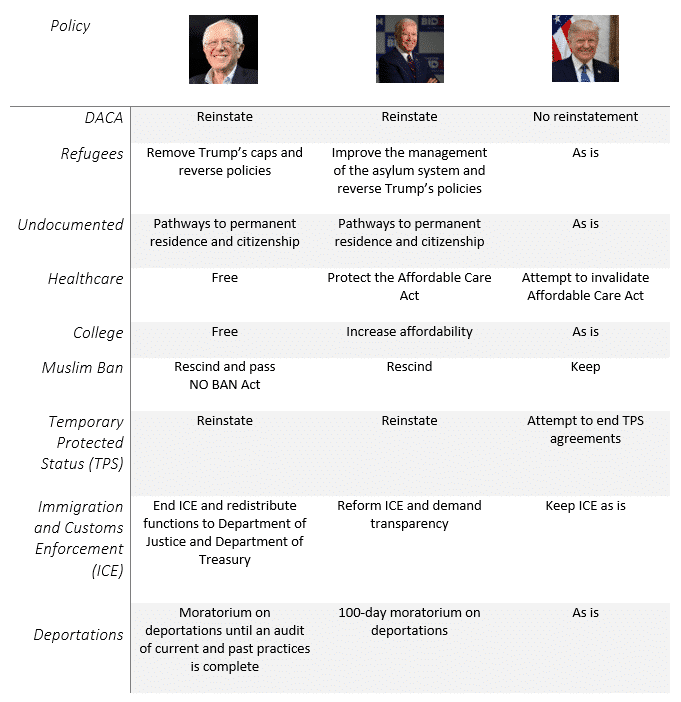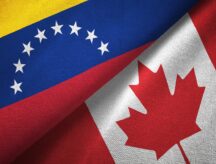Canada winning race for talent: U.S. presidential campaigns overlooking foreign workers, students
On immigration policy in the U.S., the two frontrunners in the Democratic race have had a lot to say on how to undo Trump administration policies affecting migrants and undocumented immigrants. However, they have not focused a lot of their campaigning efforts addressing the area of economic immigration where Canada appears to be winning.
As the U.S. makes it more difficult for skilled workers to renew their temporary work petitions, also known as H-1B, some immigrants are choosing Canada as an alternative.
“Canada has been good for creating visas quickly for [foreign workers],” said Julia Gelatt, a senior policy analyst at Migration Policy Institute, “It’s a concern for some of us close observers that Canada is winning the race for talent.”
Find out if you are eligible for any Canadian immigration programs
Gelatt also said at the moment Canada is doing a better job of attracting international students.
Though there are still more international students in the U.S., there has been a decline in enrolment rates since Donald Trump took office. Meanwhile, Canada has seen exponential growth in international student enrollments.
The Trump administration’s changes to immigration policy affected Canada in more than just economic-class immigration. After withdrawing Temporary Protected Status (TPS) for a reported 60,000 Haitians in November 2018, Canada saw a surge of asylum seekers coming by land from the U.S.
Democrats emphasize humanitarian over economic immigration
U.S. voters are in the process of choosing who will take on Trump in the November 2020 election. Following the Super Tuesday primaries, it is now down to U.S. senator Bernie Sanders, and former vice president Joe Biden.
Both Democratic candidates have built their immigration platforms on criticizing policies implemented by the Trump administration over the past four years, such as ending the Muslim ban, protecting immigrants who came to the U.S. as children and who became known as “Dreamers”, and implementing a moratorium on deportation.

Sourced from candidates' webpages.
Find out if you are eligible for any Canadian immigration programs
The topic of improving programs for economic-class immigrants seems to have been pushed back behind promises of abolishing Trump-era immigration reforms.
Cristobal Ramón, a senior policy analyst with Bipartisan Policy Centre, told CIC News that in all of the Democratic leader candidate platforms, none have proposed broad overhauls of employment-based immigration.
“There is no overarching vision for changing the legal immigration system,” Ramón said, “Instead what you have is minor tweaks proposed to these programs, and that’s the extent of it.”
One such “minor tweak,” Ramón explains, is Biden’s plan to expand the number of high-skilled visas and eliminating the limits on employment-based visas by country. He said this is the only Democratic promise showing an attempt to reverse what the Trump administration has done to employment-based immigration.
“While I don’t think this oversight stems from animus against these groups, it is problematic since employment-based immigrants have to contend with issues like extended backlogs for employment-based green cards that can last decades for nationals for certain countries such as China and India,” Ramón wrote in an email.
“Without these proposals, the United States can’t have a robust debate over the ways we can develop an immigration system that addresses these problems and meets the need of employment-based immigrants, their employers, and the American workforce.”
For Gelatt, the emphasis on migration is in response to the humanitarian fallout of Trump immigration policies.
“National attention has been diverted to the asylum crisis at the southwest border,” Gelatt said. “The number of asylum seekers has been really high. Consequential decisions, family separations, have pulled on our heartstrings.”
In addition, since U.S. immigration gives priority to immigration candidates who have family living in the states, some may perceive emphasis on employment-based immigration as a threat to the places that could be reserved for family members, Gelatt said.
The U.S. context runs in stark contrast to Canada's. On a per capita basis, Canada is welcoming three times as many immigrants as the U.S. Unlike in the U.S., the majority of Canada's immigrants arrive under the economic class through over 80 different immigration streams.
The major difference between the two countries is border control. U.S. immigration discourse and policies are dominated by the fact the country has historically seen large flows of irregular migration from its southern border. In the absence of significant and sustained irregular migration, Canada is now able to welcome about one million newcomers each year as immigrants, international students, and temporary foreign workers, all the while maintaining public support for immigration.
Without public support, the eventual winner of the U.S. presidential election in November will struggle to have the political capital needed to introduce economic class immigration reforms. This will allow Canada to remain at the forefront of the global race for talent.
Find out if you are eligible for any Canadian immigration programs
© 2020 CIC News All Rights Reserved
- Do you need Canadian immigration assistance? Contact the Contact Cohen Immigration Law firm by completing our form
- Send us your feedback or your non-legal assistance questions by emailing us at media@canadavisa.com







